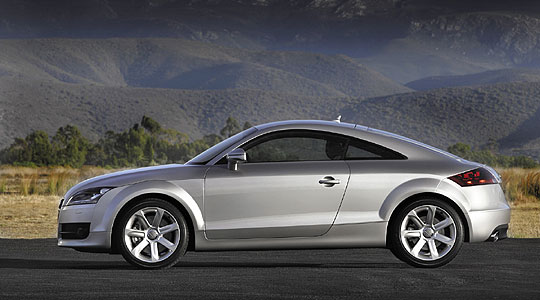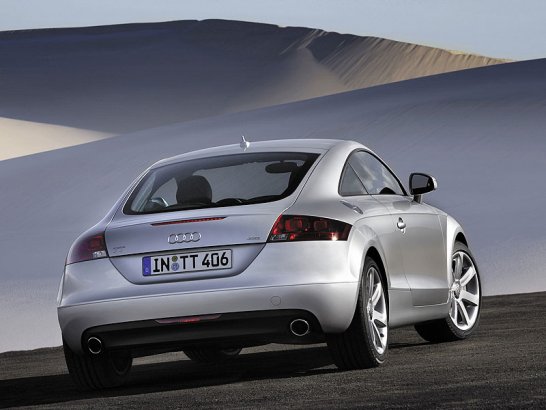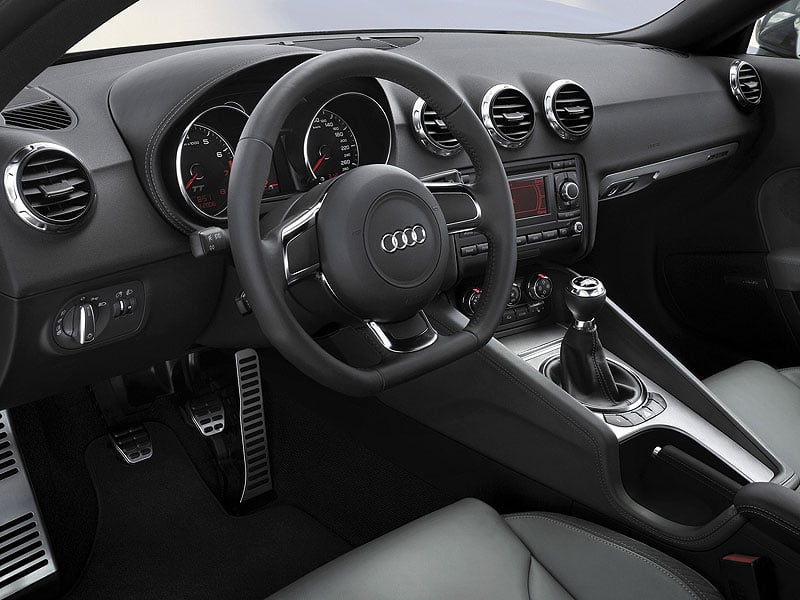
Audi has launched an entirely new TT. The latest car is longer and wider than its predecessor and the first models will have either 2.0l turbocharged four-cylinder or 3.2-litre V6 engines.
The Audi TT, launched in the autumn of 1998, was a runaway sales success and sharpened the company's brand profile.
The Audi design team has adopted and enhanced the visual code – the motif of circles and domes – of the previous model. The new TT appears more stretched - the new TT is 137 mm longer than its predecessor at 4,178 mm, and 78 mm wider at 1,842 mm.
The body is constructed in the ASF Space Frame design developed by Audi and consists of aluminium and steel. This is the first time that it has combined different materials alongside each other. 69 percent of the superstructure is made of aluminium. The steel components making up the remaining 31 percent are to be found at the rear, so as to ensure balanced distribution of the axle loads. To improve downforce, a spoiler is extended from the tailgate when the vehicle reaches a speed of 120 km/h.
The new Audi TT, like its predecessor, is initially available as a 2 + 2-seater coupé; the separate roadster model is scheduled for later launch. The basic luggage capacity is 290 litres, and this capacity can be increased to 700 litres by folding down the rear seat backs.
Two petrol engines are available to power the car. The 2.0l turbocharged four-cylinder TFSI unit featuring FSI direct injection develops 147 kW (200 bhp). With a six-speed manual gearbox, it accelerates the TT to 100 km/h in just 6.4 seconds, reaching a top speed of 240 km/h. The naturally aspirated 3.2-litre V6 engine develops 184 kW (250 bhp), accelerating from zero to 100 km/h in 5.7 seconds and reaching a top speed of 250 km/h (electronically governed).
Both engines are equipped with a six-speed manual gearbox. On request they can be combined with the dynamic S tronic dual-clutch gearbox. Whereas the four-cylinder engine comes with front-wheel drive, the V6 car will have quattro permanent four-wheel drive.

The track enlargement, with larger wheels ranging from 16 to 19 inches in size, and extensive changes in the area of elastokinematics were key areas of the developers’ work. The new multi-link rear suspension ensures optimum driving dynamics at a sports car level.
The high-tech Audi magnetic ride damper system is available as an option. In this system, tiny magnetic particles circulate in the oil inside the shock absorbers. When a voltage is applied to them, they alter the damping characteristics within milliseconds. This adaptive system simultaneously ensures high levels of ride comfort and thoroughly sporty dynamism, according to the specific driving scenario and the preferences of the driver.
The standard features of the new Audi TT also includes a flat-bottomed sports steering wheel, and customers can choose from a variety of high-tech solutions, including the adaptive light dynamic cornering light system.
The new TT marks the premiere of a new generation of audio systems. It is characterised by state-of-the-art reception and playback technology and intuitive user control. Six so-called softkeys control a variety of functions depending on which menu is selected. The chorus radio system with single CD drive comes as standard. A Bluetooth interface is available for mobile phones. The telephone function can be operated via the MMI, the multifunction steering wheel and by speech control. The operator control for the optional navigation system takes its cues from the exemplary MMI system familiar from the Audi A6, A8 and Q7 model series.


Text: Classic Driver
Photos: Audi
ClassicInside - The Classic Driver Newsletter
Free Subscription!



